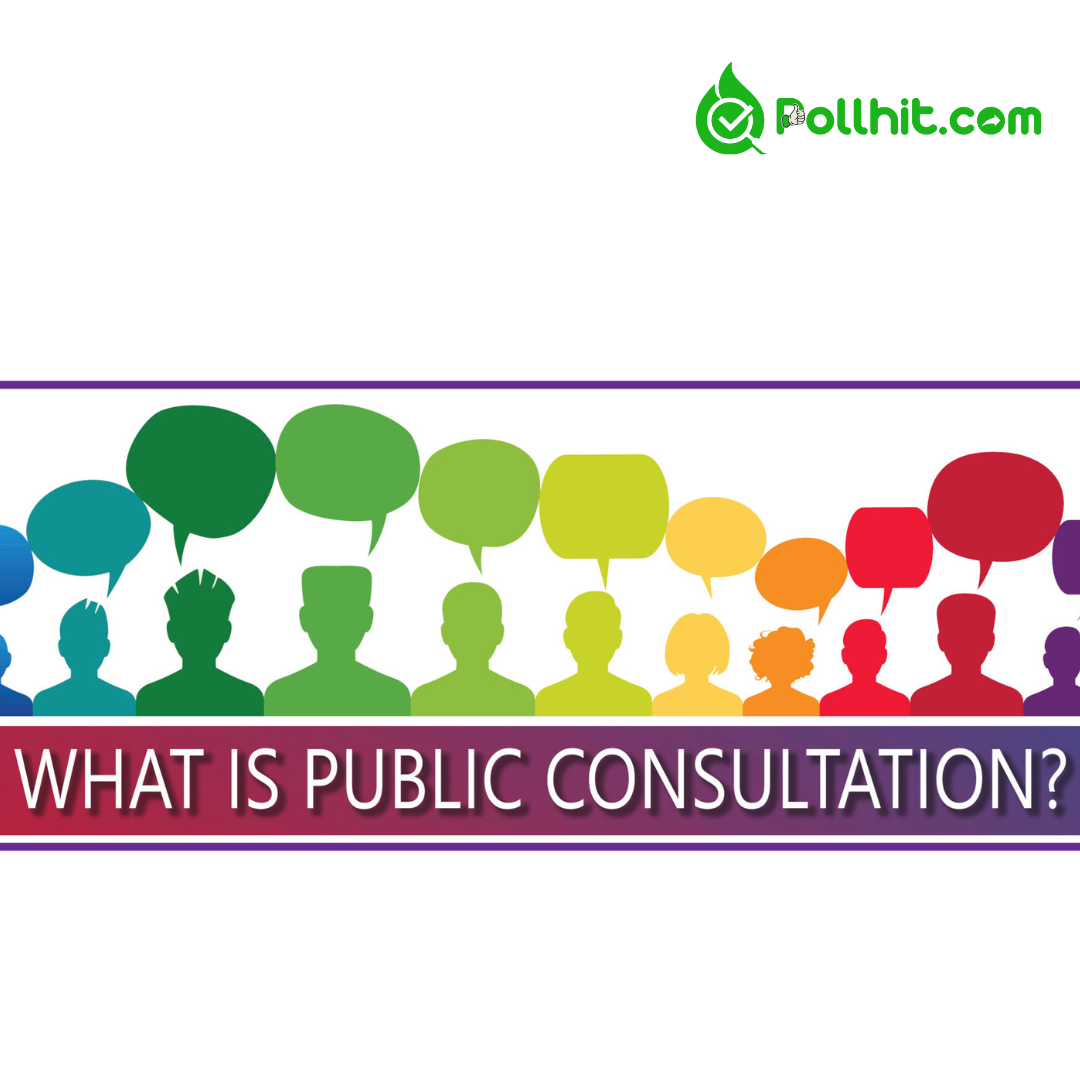Governmental agencies, local governments, and other public organizations engage in public consultation as a means of getting the public’s thoughts, feelings, suggestions, and input on matters that are important to them. Decisions, policies, and the pulse of the populace are all influenced by this back and forth.
This article will define public consultations, explain their purpose, and discuss how they are carried out. We’ll talk about best practices for their design, who is involved, and why they important.
Definition of public consultation
Now, describe a public consultation in detail. It’s a system, a tool, but above all, it’s a dialogue. It’s also a conversation with no set conclusion, just like any good conversation. The opinions expressed in the responses are significant and have the power to change the direction of actions.

Inclusion is the goal of public consultation. It’s about making sure that a small group of people don’t make choices alone, behind closed doors. Rather, it invites the people inside by opening the door, sometimes just a crack and other times wide. The goal? assemble a variety of opinions, comprehend issues, and uncover concepts that could have gone unnoticed in the halls of power.
It’s a complicated process that involves listening, participating, and—most importantly—acting on what you hear. It goes beyond simply appearing to listen;it’s about actually listening and letting that listening inform action.
The public consultation process
Public consultation isn’t a singular moment in time; rather, it is a deliberate progression, a dynamic journey that unfolds gradually, evolving through various stages, each one intricately connected to the prior step. This process commences long before the public is even made cognizant of the impending consultation, at the initial stages of pre-consultation planning. During this crucial period, the foundation of the consultation is established as objectives are meticulously formulated, and the boundaries of the consultation are clearly outlined. These early phases constitute the essential backstage operation, the behind-the-scenes preparations that lay the necessary groundwork for an efficient and meaningful consultation process. By carefully laying this groundwork and defining the necessary parameters at the outset, the consultation is then primed to progress smoothly and achieve its intended goals with the active involvement of the public throughout the journey.
At last, decisions based on input from the consultation are put into action. Here is where the consultation’s effects are most noticeable. The choices taken at this point, whether they involve new projects, policy changes, or modifications to an already-existing plan, are directly influenced by public feedback. It is the last step in the consultation process, where the public is shown the fruits of their involvement and the outcomes are implemented.
Who is involved in public consultations?
Public consultations are a multifaceted process encompassing various stakeholders from diverse backgrounds, each contributing unique perspectives and expertise to the discussion. At its foundation, government bodies, such as local councils, national government departments, and public agencies, play a pivotal role in driving these consultations forward. These bodies serve as the catalyst for engagement by establishing the framework, outlining objectives, and guaranteeing a transparent and equitable process. They serve as the architects, shaping the structure and dynamics of the consultation to facilitate meaningful dialogue and decision-making.
Moreover, these government entities bear the responsibility of actively engaging with the public, ensuring that voices from all sectors of society are heard and considered. Their commitment to inclusivity and accessibility fosters a participatory environment where individuals feel empowered to share their insights and concerns. By nurturing a culture of openness and collaboration, these bodies pave the way for productive exchanges and constructive outcomes that benefit the community at large.
In essence, the government bodies serve as the linchpin of public consultations, guiding the process through its various stages and ensuring that the dialogue remains focused on serving the public interest. Their dedication to upholding the principles of democracy and governance shines through in their meticulous planning and execution of consultations, illustrating a commitment to fostering a vibrant and responsive decision-making framework. Ultimately, their efforts culminate in an enriching and impactful experience that strengthens civic engagement and promotes the common good.
Conclusion
Embarking on the journey of public consultation allows us to delve deep into the multifaceted facets that shape our democratic process. Through its various guises, this engagement becomes a cornerstone, not only for collecting diverse perspectives but also for nurturing a meaningful exchange that cultivates trust within our communities. By prioritizing this reciprocal dialogue, vetting ideas, and aligning decisions with the broader interests of society, we pave the way for a governance system that truly reflects the will of the people it serves.
By embracing the complexities, intricacies, and responsibilities that come with public consultation, we bring to light its transformative power in shaping policies that resonate with the community. This collaborative effort ensures that citizens are not mere spectators but active participants in governance, fostering a culture of inclusion, diversity, and responsiveness. As a result, our society evolves into a vibrant hub of engagement, where the voices of all individuals are heard, valued, and integrated into the fabric of our democratic tapestry.
